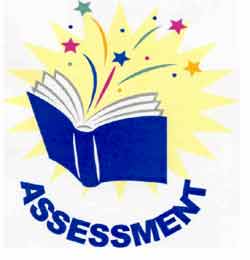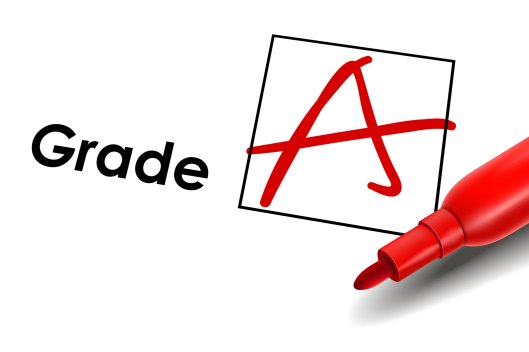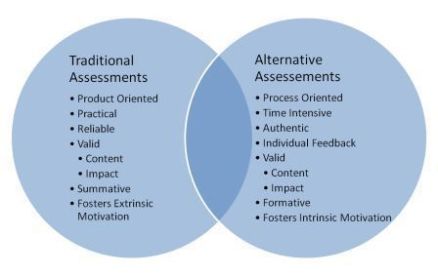http://region6eps.bostonabcd.org/home/assessment_logo.jpg?attredirects=0
My past misconception: Assessment = Grades. That’s how I looked at assessment before I took EDS 113.
Again, I feel sad and happy. Sad because I know that many teachers out there don’t fully understand what assessment is; happy because I know there’s hope for our educational system. I am more convinced that current teachers and teachers to-be should go through the teacher-education program, get this course alongside the basic Professional Teaching Certification, and continue to learn through seminars, training, and workshops, or even through online learning. (If I may mention, studying through UPOU made me more aware of the vast, rich, and useful information we can get from trusted educational sites of the internet; merely browsing through the educational websites will help teachers learn more.)
I once thought I was ready to teach, that I was competent enough, but ugh, while studying this course, I realized I definitely had a lot of limitations. For one, I was one of those who didn’t fully understand what assessments are for. Thanks to EDS 113, this has changed.
What have I learned from this course? Today, I am endowed with new learning.:)
- Assessment is not all about grades.
- Assessment definitely helps improve teaching and learning!
- Assessment is the process of getting information about what and how the students learn, and using this information to guide instruction and boost learning.
- Assessment gives feedback to teachers and students that help them both adjust their teaching and learning strategies to achieve learning goals.
- Assessment should be aligned with goals/objectives, curriculum/instruction, and outcomes, so learning can be maximized.
- Assessment helps us to PLAN (what do I want my students to learn?); to DO (How do I help them learn effectively?); to CHECK (Have we achieved goals and outcomes?), and to ACT (How do I use the information I gathered? What adjustments and refinements should I do?). This is the assessment cycle that helps continuously improve the teaching-learning process; this is the assessment cycle that makes assessment useful for its intended purposes: the assessment FOR learning, the assessment AS learning, and the assessment OF learning.
The three main purposes of assessment:
- Assessment FOR learning is an ongoing process that gauges and monitors student learning in order to inform instruction, as well as help students monitor and manage their own learning. It guides both teachers and students on what wise steps to take next. Formative assessments serve the purpose of assessment FOR learning.
- Assessment AS learning is also an ongoing process that helps the students self-reflect on their learning, know their weaknesses and strengths, adjust their learning strategies, correct past errors, plan next best steps, and become independent, self-directed, metacognitive, and successful learners. Formative assessments, like self and peer assessments, serve the purpose of assessment AS learning.
- Assessment OF learning measures the students’ competency; certifies learning; and provides evidence if program goals and objectives have been met and outcomes have been achieved. Summative assessments serve the purpose of assessment OF learning.
There are different types of assessment:
- Formal assessment is the systematic, well planned data-based assessment that evaluates student learning. Formal assessment determines the students’ proficiency or mastery of the content, and can be used for comparisons relative to certain standards, or relative to other students’ performances.
- Informal assessment is the casual/spontaneous content-based and performance-based form of assessment that measures the students’ performance and learning progress. Informal assessment is incorporated in the day-to-day classroom activities.
- Formative assessment gives continuous feedback about students’ learning that informs instruction and helps students successfully manage their own learning; it guides both teachers and students about their next wise steps. Formative assessment occurs all throughout instruction.
- Summative assessment certifies learning; it measures what the students have learned. Summative assessment data can be used to gauge students’ competency; assign grades; rank the students; and compare students’ performances vs. certain standards or vs. other students’ performances. Summative assessment is given after instruction.
- Traditional assessment refers to customary method of measuring the students’ knowledge and skills, usually through standardized pen and paper tests.
- Authentic assessment is the process of gauging the students’ learning by asking them to perform real-life tasks and meaningfully apply what they have learned.
- Peer and self-assessments involve students taking responsibility of assessing their peer’s work and their own against a set of standards/criteria/rubric. They help students become reflective of their own learning and empower them to be more responsible in successfully directing and managing their own learning.
- Differentiated assessment is the method by which teachers adjust and match assessment with the varied profiles, needs, and preferences of diverse students in order to bridge individual learning gaps, and meet the students’ individual learning needs.
- Each type of assessment has its strengths and weaknesses, but each type can definitely contribute to the main goal of assessment, that is, to improve teaching and learning. It is best to employ a balance of each type of assessment in our classrooms.
- No single assessment can fully measure the students’ learning progress and achievements. Wisely combining multiple types of assessment, and using the information gathered from all these assessments appropriately can help achieve all three purposes of assessment: the assessment OF, FOR and AS learning.
- Giving feedback is valuable. Feedback should be timely, prompt, efficient, constructive, focused, consequential, and always supportive of learning.
- Providing clear, well-defined rubrics (scoring criteria) helps the students to plan, strategize, and maneuver their work towards successfully meeting the prescribed criteria, and come up with excellent work or performance.
- Teachers must be keen in constructing good and effective assessment items. The Table of Specifications is one of the tools that can guide them in carefully and systematically designing a test.
How can I effectively assess my students in the future?
- I will be a reflective teacher, and always think of how I can help my students learn best; I will consider my students’ welfare before my own.
- I will align my assessment with my learning goals, outcomes and instruction.
- I will use assessment not only to assign grades, but to learn whether my students have successfully learned the targeted learning outcomes; if my teaching is effective; if misconceptions have been corrected, learning gaps have been bridged, and learning needs have been met; if programs are successful; and if my students are enjoying learning.
- I will match my assessment with my students’ readiness, profile, needs, and preferences; I will adjust my teaching accordingly.
- I will Plan, Do, Check and Act!
- I will use a mix or a balance of each type of assessment in my classroom. I’ll take advantage of the assessment’s strengths and apply interventions to balance or neutralize the weaknesses.
- I will integrate my assessments with many rich learning opportunities. I will employ a few formal traditional assessments, and complement it with plenty of fun yet effective informal authentic assessments. I will ensure that these informal authentic assessments are valid, reliable and properly guided by rubrics and standards. I will make sure that traditional assessments are carefully crafted to tap my students’ higher level of thinking skills.
- I will use assessments to tap my students’ low and high level cognitive skills: knowledge, comprehension, synthesis, application, and evaluation.
- I will differentiate my instruction and assessments according to my students’ individual needs, bridge the learning gaps, and make proper interventions and accommodations.
- I will empower my students to self-reflect, think critically, manage their own learning, and become the self-directed, metacognitive, independent and successful learners that they ought to be.
- I will provide parents timely feedback about their children’s performances and partner with them in helping their children excel.
- I will partner with my students and help them achieve their learning goals. We shall join forces to produce powerful learning outcomes!
- I will share lessons-learned and best practices with my colleagues and help each other in improving our craft.
- I will use assessment data to really improve teaching and learning, and to help refine educational programs.
- I will always reflect about my teaching styles, instructional strategies, and assessment methods, and continuously ask myself…
Daisy, how else can you help in improving teaching and learning?
(Thanks, Teacher Malou, for another rich learning experience. 🙂 Admittedly, finishing the course was a great challenge, but then again, it was all worthwhile!
Cheers to all my classmates, too! 🙂
…Daisy, here, more empowered to teach because of EDS 103 and 113! (hmm, I hope, haha) 🙂
















